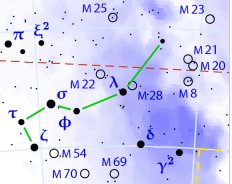The key to the success of the agricultural revolution was evidently irrigation. This motivated much people coming together in order to manage all the work needed. Which in turn generated enough food to support them all. Famine was no more. The great rivers delivered a stable support of sweet water and they in turn originated from somewhere high up among the cold mountains.
The warm air of high summer carried much humidity and when the mountains forced this air to rise upwards it became cold and lost its ability to carry water, thus resulting in rain and streams of water flowing downwards and coming together to become mighty rivers. ... 'The life-force of the earth is water. God moulded the earth with water. Blood too he made out of water. Even in a stone there is this force, for there is moisture in everything. But if Nummo is water, it also produces copper. When the sky is overcast, the sun's rays may be seen materializing on the misty horizon. These rays, excreted by the spirits, are of copper and are light. They are water too, because they uphold the earth's moisture as it rises. The Pair excrete light, because they are also light ... 'The sun's rays,' he went on, 'are fire and the Nummo's excrement. It is the rays which give the sun its strength. It is the Nummo who gives life to this star, for the sun is in some sort a star.' It was difficult to get him to explain what he meant by this obscure statement. The Nazarene made more than one fruitless effort to understand this part of the cosmogony; he could not discover any chink or crack through which to apprehend its meaning. He was moreover confronted with identifications which no European, that is, no average rational European, could admit. He felt himself humiliated, though not disagreeably so, at finding that his informant regarded fire and water as complementary, and not as opposites. The rays of light and heat draw the water up, and also cause it to descend again in the form of rain. That is all to the good. The movement created by this coming and going is a good thing. By means of the rays the Nummo draws out, and gives back the life-force. This movement indeed makes life. The old man realized that he was now at a critical point. If the Nazarene did not understand this business of coming and going, he would not understand anything else. He wanted to say that what made life was not so much force as the movement of forces. He reverted to the idea of a universal shuttle service. 'The rays drink up the little waters of the earth, the shallow pools, making them rise, and then descend again in rain.' Then, leaving aside the question of water, he summed up his argument: 'To draw up and then return what one had drawn - that is the life of the world.' ... The Chinese had a water snake at the beginning of their zodiac: ... In China, with Capricornus, Pisces, and a part of Sagittarius, it [Aquarius] constituted the early Serpent, or Turtle, Tien Yuen; and later was known as Hiuen Ying, the Dark Warrior and Hero, or Darkly Flourishing One, the Hiuen Wu, or Hiuen Heaou, of the Han dynasty, which Dupuis gave as Hiven Mao. It was a symbol of the emperor Tchoun Hin, in whose reign was a great deluge; but after the Jesuits came in it became Paou Ping, the Precious Vase. It contained three of the sieu, and headed the list of zodiac signs as the Rat, which in the far East was the ideograph for 'water', and still so remains in the almanacs of Central Asia, Cochin China, and Japan ...
This green serpent began at the South Dipper and ended at the Square of Pegasus. It was at the opposite side of the year compared to the warm high summer illustrated as a great red bird with a pair of glorious long tails. Its beak was at Gemini. In the C text we have found the beginning of the Tree (rakau) at the Lord of Created Beings in the day after Betelgeuze:
And then the South Dipper should be 13 days later, viz. at the Full Moon:
82 days later Metoro suggested to Bishop Jaussen that he should count (hia):
|
|||||||||||||||||||||||||||||||||||||||||||||||||||||||||||||||||||||||||








.jpg)
